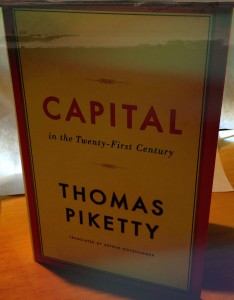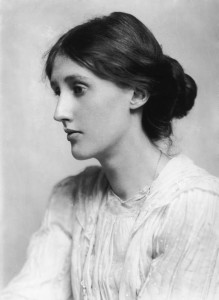By Nathan Roberts
The Middle Class is dying. So what?
This question opens A.O. Scott’s fascinating response to Thomas Piketty’s bestseller, Capital in the 21st Century. “The book’s thesis,”Scott explains, is “that economic inequality in the developed world is increasing, with potentially dire consequences for social justice and democratic governance.” According to Piketty, the Western dream of an economically egalitarian world is naïve and, ultimately, untenable. His diagnosis hits the Democratic Idealist––for whom “the expansion of the middle class…unfolded according to something like a natural law”––right in the kisser.
But Scott, a cultural critic, isn’t interested in making further economic prognostications. Instead, he wonders: If we lose the middle class or the “middlebrow,” what do we really lose? What do these terms mean culturally, morally?
Scott steps back to Britain. After Industrial Revolution workers flocked to cities and aristocrats died off in World Wars I and II, the age-old landlord/serf dichotomy dissolved into a less stratified socioeconomic system. The word “middlebrow” “crept into English, in class-ridden Britain, between the wars.” Virginia Woolf proclaimed: “If any human being, man, woman, dog, cat or half-crushed worm dares call me ‘middlebrow,’ I will take my pen and stab him dead.”
Old World Highbrows, New World Middlebrows
Woolf’s declaration was, in her eyes, a moral one. She was a dedicated, self-proclaimed “highbrow”: dedicated to ideas, language, fine art. These passions left her sympathetic with “lowbrows.” “‘The highbrows would like,’ [Russell Lynes] notes, perhaps with Woolf in mind, ‘to eliminate the middlebrows and devise a society that would approximate an intellectual feudal system, in which the lowbrows do the work and create folk arts, and the highbrows do the thinking and create fine arts.’” By contrast, the pesky “middlebrows” don’t care about “pure, complmentary pursuits”; they swap vocational significance for “money, fame, power or prestige.”
In other words, if we use Woolf’s definition, American culture is utterly middlebrow. We live in constant pursuit of “money, fame, power, and prestige.” In postwar America, “higher wages, more leisure, increased access to higher education, foundation- and government-supported arts organizations” watered the seeds of a blossoming, upwardly mobile middle class.
And now, it seems, that middle class is declining. Scott’s eulogy is fun to read, (“More does not always mean better, but the years after World War II were a grand era of more…. High culture became more accessible, popular culture became more ambitious, until the distinction between them collapsed altogether.”) but it ends on a mournful note: “The highbrows were co-opted or killed off by the middle, and the elitism they championed has been replaced by another kind, the kind that measures all value, cultural and otherwise, in money.”
What Comes Next?
If Piketty and Scott are right, we stand at a moral watershed. Old World ideology is thoughtful but problematic; New World ideology is egalitarian but vapid.
It’s easy to trash British privilege, but Woolf’s indignation was righteous indignation. She championed harmony between life and work. She was wary of greedy opportunism. Rightly so. Unfortunately, like many Western pre-war intellectuals, her moral opinions were couched in a rigid (and, as any liberal arts student will breathlessly tell you, oppressive) socioeconomic hierarchy: “a world of landlords and peasants, of masters and servants, of patrons and workers… in which art and life harmonize.” Woolf’s “intellectual feudal system,” with its person-type classification and its assumption that “lowbrow” people enjoy doing “lowbrow” work, is not only outdated. It’s small-minded.
The middlebrows successfully eliminated this social determinism, championing “life, liberty, and the pursuit of happiness” in its place. But middlebrows threw out the moral baby with the bathwater; the “pursuit of happiness” has, too often, looked like the pursuit of money. (Exhibit A: The Pursuit of Happyness, rags-to-riches Will Smith film, 2006.)
 When middlebrow culture prospered, this didn’t seem like a major problem. People lived decent-looking lives. But now, as distance between the rich and the poor increases, the greediness that underlied an egalitarian 20th century made way for a stratified, polarized 21st century. Occupy Wall Street gave us a sneak preview: blasé tightfistedness from the “haves”; entitled, jealous bullying from the “have-nots.”
When middlebrow culture prospered, this didn’t seem like a major problem. People lived decent-looking lives. But now, as distance between the rich and the poor increases, the greediness that underlied an egalitarian 20th century made way for a stratified, polarized 21st century. Occupy Wall Street gave us a sneak preview: blasé tightfistedness from the “haves”; entitled, jealous bullying from the “have-nots.”
Woolf is right: a carpenter or plumber may find joy in her vocation. A bestselling author or a philosopher may do the same. Fine Arts and Craft Arts are both arts. And pursuing wealth for its own sake is a surefire gateway to an empty, narcissistic lifestyle.
The relevant questions, then, relate to how the New High/Lowbrows can learn from the errors of the Old Highbrows and shrinking Middlebrows. How can we respect the value of vocational diversity without assuming that “these sorts of people” belong in “those vocations”? How can we ensure that individuals are fairly compensated for diverse, fulfilling careers? And how can we promote an egalitarian society without being unified by greed?











